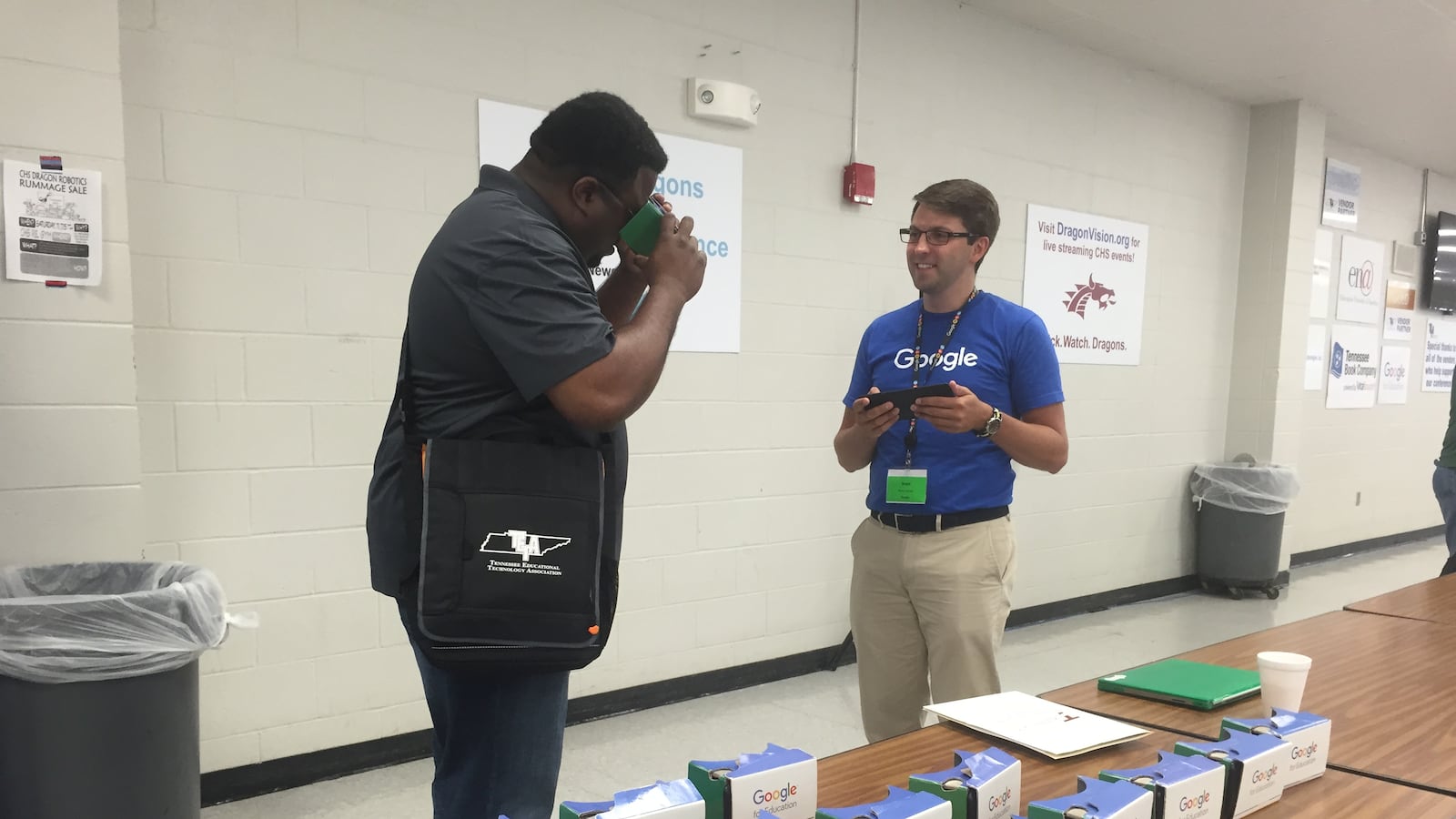In a digital world, the drive to create high-tech classrooms to build tech-savvy skills is a given, but how to go about that can be challenging — and expensive.
At a statewide technology institute for educators this week at Collierville High School near Memphis, Chalkbeat spoke with district tech leaders about the challenges they face to equip their schools to help students thrive in future digital workplaces.
Here are the four biggest challenges they face:
1. Funding
Without question, having enough money to pay for technology and training is the No. 1 concern of tech educators in Tennessee.
For the upcoming school year, Gov. Bill Haslam and the legislature increased the state’s technology allocation for schools by $10 million. It was the first time the area has seen a bump in funding since 1992. However, district and school leaders ultimately decide whether the money earmarked for technology goes toward that need.
It’s not a given, according to Joan Gray, executive director of the Tennessee Educational Technology Association. “Technology is as important in today’s schools as electricity,” she said. “(Districts) have no problem giving money to keep the lights on, but when you talk about paying for technology, they say, ‘We can’t pay for it.’”
2. Internet access
The world may be wired for the internet, but many homes still don’t have access, especially in rural districts.
In 2013, Tennessee ranked 41st for households with high-speed internet access, impacting about 28 percent of households, according to the U.S. Census Bureau’s American Community Survey.
In rural districts such as West Carroll in West Tennessee, for instance, many teachers must make sure their students have time in class to complete assignments, since many don’t even have cell phone service at home, said technology director Sheila Brawner.
“Anything we do, we have to do exclusively at school,” Brawner said. “You can’t make large assignments because you take all of your class time doing assignments that way.”
3. Teacher training
While many districts are investing in equipment to give each student access to computers, tablets or other devices, technology training for educators often gets lost in the shuffle.
“You can put all the devices you want out there, but helping your teachers learn how to use it and having an instructional integration person is very important,” said Brad Luna, a technology coordinator for Lincoln County Schools, which doesn’t have such a position yet.
“We have a lot of devices and we’ve been getting more, but if you don’t have the personnel and a plan, it’s not going to work,” added Tom Waller, technology director for Wilson County Schools.
4. Making tech ed fun on a budget
Finding innovative ways to use technology is an essential way to reach kids, but making it cost-effective isn’t always easy, said Torrence Myers, a technology specialist at Collierville High School.
“I think that the obstacle in the future, not just for our district, but for all districts, is finding a way to kind of come out of the box and figuring out how to fund that,” he said.
An example, he said, was demonstrated at the conference — Google Cardboard, which attaches to a smartphone and creates a virtual-reality experience for about $10.
“All you need is a wifi touchscreen device,” Myers said.
Technology leaders warn school districts to stay tuned. You can expect technology in schools to look very different in 10 years than it does today, said Gray, the technology association executive director. It wasn’t long ago, she notes, that switches and wiring were all the rage.
“I think we’re probably going to move toward virtual-reality, Google glasses … more 3D printing, less wires and more wireless devices of all kinds, and more and more toward one-to-one programs,” she said.

